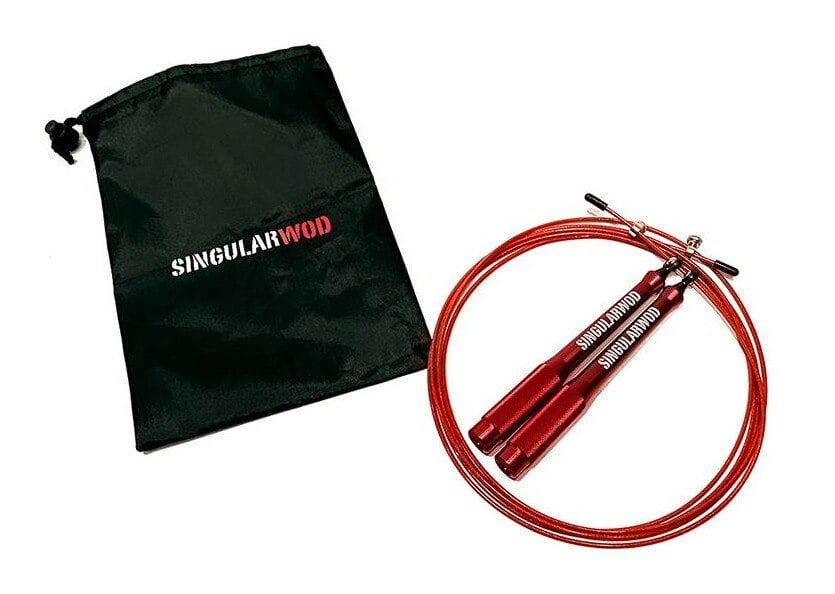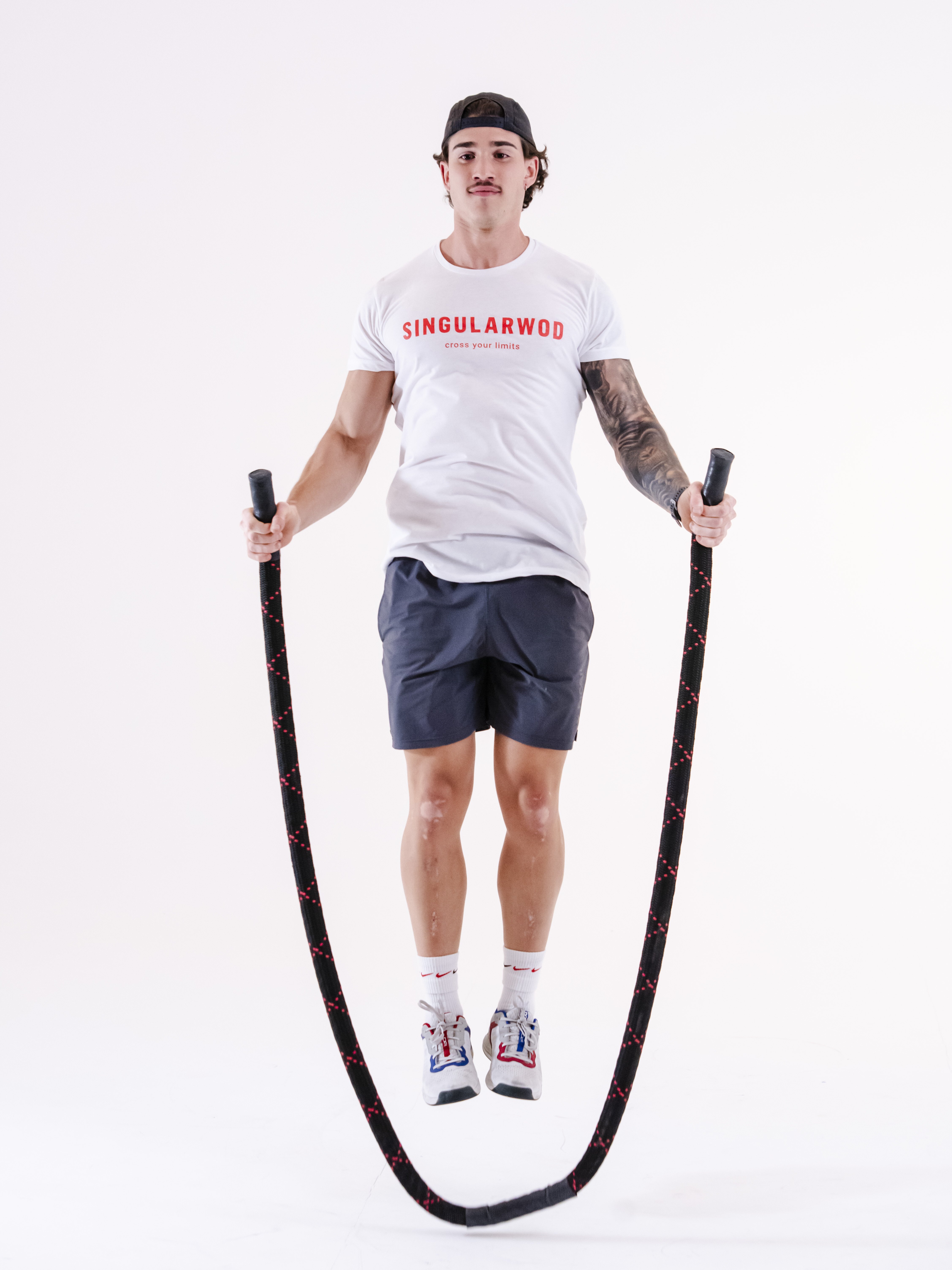Jumping rope is an ideal exercise, it doesn't require much technique, you don't need very specific equipment (there are ropes for all tastes and budgets) and you don't even need much space. It's also perfect for activating ourselves in a controlled way and doing a warm-up that raises our heart rate.
But if we want, there are also ways to make CrossFit jump ropes, whether single or double, part of our training routines far beyond just warming up.
Until recently, the jump rope was almost entirely reserved for those who practiced martial arts, but with the arrival of high-intensity training such as CrossFit, they have returned to the shelves and have also evolved a lot in recent years. That's why today we are going to show you the different types of jump rope that exist and how to integrate them into your workouts.
Basic and classic jump rope for crossfit
Don't complicate things, if you have a jump rope at home, any kind of rope will do for you to start with. Normally it will have rubber handles and the rope will be made of rubber, leather or nylon and of considerable thickness, but none of this matters at the beginning. What matters is that you remind your body what the act of jumping is, start very slowly and internalize it if you want to continue to get a more specific rope.
Speed rope for crossfit

They are currently the most common in training centres and there are countless versions varying in quality and finish. Their handles, depending on the quality level, are made of plastic, fibres or metal (aluminium or steel), with more or less ergonomic shapes, and many even have knurling that improves grip.
As for the rope, here we move on to a braided steel cable sometimes covered in plastic to extend its durability.
The thickness of the cable ranges from just 1.4 mm to 2.5 mm. The first of these does not have any coating and is the fastest version, but wears out much more when in contact with the ground.
These jump ropes are characterized by being extremely light, both the handles and the cable. In addition, the bearings or turning mechanisms favor high repetitions, making double or triple jumps much easier than with a classic jump rope.
Without a doubt, if you don't have a previous jump rope, this should be your first choice.
Weighted jump rope for crossfit
They are the evolution of speed ropes. What is done is to add weight to the cable or the handles. Some speed ropes are already prepared to be weighted (normally they are those with metal handles).
The option to ballast the cable is to increase its thickness; for this, the cable clamping mechanism must allow connecting cables of different diameters.
The thickness of the cable reaches measurements of up to 4mm thick, which increases its weight exponentially.
The other option, as we mentioned, is to weight the handles. This is done with small weights (from 25 grams per handle to more than 200 grams) that are either inserted inside the handles or screwed onto them, achieving weights that sometimes exceed 350 grams per handle.
Jumping with a weighted rope turns an aerobic exercise into a strength exercise, putting our forearms and shoulders to the test. It is an ideal complement to improve and add variety to our workouts.
Heavy jump rope for crossfit
These ropes come from other sports or training systems that seek to improve resistance combined with strength. The training is totally different, and so are the stimuli. With heavy ropes, speed in jumping is sacrificed for much greater power in the arm strokes.
Unlike speed or weighted rope jumping, in heavy rope jumping it is almost essential to involve the shoulders at a greater level, which takes our body to situations it had never known before.
Heavy ropes are made from a single piece, their structure can be made of nylon or hemp fiber, and their braiding is very similar to climbing ropes. The handles are obtained by sheathing the ends of the rope itself in rubber.
They do not vary in length, and are usually available in two or three sizes and weights ranging from 1 kilo 200 grams to 4 kilos. As you can imagine, the intensity of this element reaches a level where double jumps become almost impossible.
Heavy or weighted speed rope
Finally, we come to a very recently created jump rope, a mix between weighted and heavy jump ropes. They combine characteristics of both to generate an intermediate stimulus greater than that of a weighted one and somewhat less than that of a heavy one. With this we achieve a high intensity but at the same time we can achieve movements such as double jumps, even if it is with some difficulty.
The structure of this jump rope is visually similar to a weighted jump rope, but the weight of the jump rope is unique, meaning it cannot be varied. It is distributed through a thick cable and heavy handles.
As there is no option to exchange weights, this is a jump rope that is very focused on sports competitions, as the standard is set by the element and without interchangeable parts it is easier to use.
Conclusion:
As you can see, the world of rope skipping has a lot of rope! In addition to all these ropes, which are the ones we find most often in boxing and CrossFit competitions, there are acrobatic ropes, ropes with a jump counter (this technology is not yet very well developed), or even ropeless rope simulators.




Leave a comment
This site is protected by hCaptcha and the hCaptcha Privacy Policy and Terms of Service apply.